Eucalyptus plant
Eucalyptus specifications
- Common Name : Eucalyptus, silver dollar tree, argyle apple
- Order : Myrtales
- Family : Myrtaceae
- Subfamily : Myrtoideae
- Tribe : Eucalypteae
- Genus : Eucalyptus
- Sun Exposure : Full
- Soil Type : Well-drained
- Bloom Time : Summer
- Native Area : Australia, Malaysia and the Philippines
What Is Eucalyptus?
Eucalyptus is a genus of more than 700 species of plants belonging to the myrtle family (Myrtaceae). Eucalyptus plants are fast-growing evergreen trees and shrubs. Eucalyptus trees can reach heights of up to 300 feet. Their bark is smooth to the touch and peels away easily. They are considered gum trees due to the sap excreted when the bark is broken. The most common variety of eucalyptus tree is called blue gum ( Eucalyptus globulus ), which gets its name from its blue-green foliage. Eucalyptus plant
Eucalyptus shrubs have a maximum height of about 30 feet tall. The shape and color of eucalyptus leaves varies greatly between species. The most common varieties have glossy green, oval-shaped leaves that narrow to a point. Some less mature varieties will have rounder leaves that are a dusty green color.
read more : Everything about giant reed : How to Plant & care for them
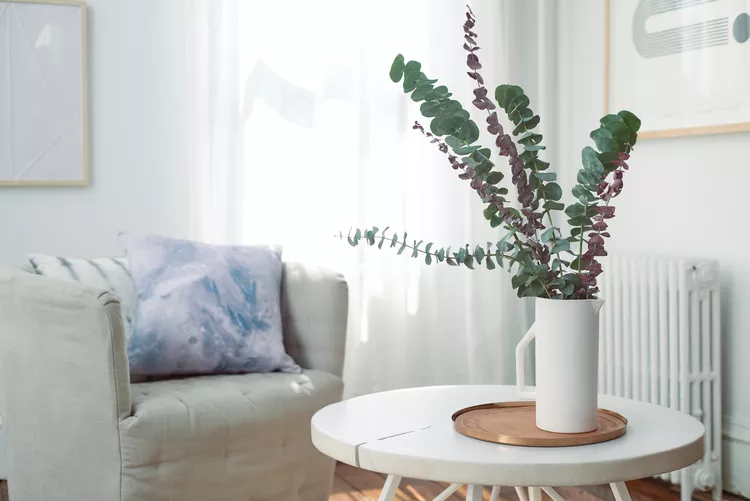
Eucalyptus native areas
Most species of Eucalyptus are native to Australia, and every state and territory has representative species. About three-quarters of Australian forests are eucalypt forests. Many eucalypt species have adapted to wildfire, and resprout after fire or have seeds which survive fire. Eucalyptus plant
A few species are native to islands north of Australia and a smaller number are only found outside the continent. Eucalypts have been grown in plantations in many other countries because they are fast growing and have valuable timber, or can be used for pulpwood, for honey production or essential oils. In some countries, however, they have been removed because of the danger of forest fires due to their high inflammability.
How to Grow and Care for Eucalyptus
You might be most familiar with eucalyptus plants (Eucalyptus cinerea) as a favorite food of the koala. This evergreen tree can grow to nearly 60 feet high in its natural Australian environment. But when planting eucalyptus in home gardens, it usually remains small at around 6 to 10 feet high. It features reddish-brown bark that peels on the smaller branches. Eucalyptus plant
The leaves are a silvery to blue-green color, and they give off the plant’s distinct menthol-like fragrance when bruised. Eucalyptus trees are best planted in the spring. They have a fast growth rate and can gain several feet per year. It’s important to note that the bark, leaves, and sap of eucalyptus are toxic both to humans1 and pets.
read more : Everything about stipa : How to Plant & care for them
Eucalyptus Plant Care
When planning how to care for eucalyptus plants outdoors, first choose a planting site that gets lots of sun and has soil with sharp drainage. Make sure no nearby trees or shrubs will block sunlight from a young eucalyptus plant. Also, ensure that there is enough space to accommodate the tree’s full height and spread. If you’re planting multiple eucalyptus trees, space them at least 8 feet apart.
These trees generally do not need any staking or other support structure on which to grow. And they also can be grown in containers as well as indoors when given enough light. Eucalyptus plant
Beyond enjoying its beauty, growers can also harvest eucalyptus for various uses. Wait until later in the growing season to harvest mature leaves and branches. If you just want the leaves, simply snip them off with pruners or by hand. Air-dry them on a paper towel or drying screen in a cool spot out of direct sunlight. Wait until the leaves are slightly leathery or crispy, and then store them in glass jars with tightly sealed lids.
 Light
Light
Eucalyptus likes a lot of light, so settle your plant somewhere in your landscape that receives at least six hours of direct sunlight daily. Likewise, eucalyptus plants grown indoors should be kept near a bright window, preferably one that faces south.
 Soil
Soil
Eucalyptus can tolerate most soil types, but it needs soil with good drainage. For container plants, use a well-draining potting mix. A slightly acidic to neutral soil pH is best.
 Water
Water
Eucalyptus is somewhat drought-tolerant once it’s established. However, it really doesn’t like to be left dry for long periods, and doing so might cause it to drop leaves. A good rule of thumb is to water when you can stick your finger into the soil and feel dryness at your fingertip. This often will amount to watering weekly if you haven’t had rainfall, especially for container plants.
read more : Everything about palm : How to Plant & care for them
 Temperature and Humidity
Temperature and Humidity
Eucalyptus prefers warm temperatures between roughly 65 and 75 degrees Fahrenheit, and it likes a moderate humidity level. It cannot survive prolonged exposure to temperatures below 50 degrees Fahrenheit. So if you’re growing your plant in a container, bring it indoors when you expect chilly temperatures.
 Fertilizer ( dried Eucalyptus leaves )
Fertilizer ( dried Eucalyptus leaves )
If you’re growing your plant in the ground, it typically won’t need fertilizer. However, container plants will deplete their nutrients more quickly. So fertilize them with a low-nitrogen houseplant fertilizer throughout the growing season, following label instructions.
Types of Eucalyptus
In addition to Eucalyptus cinerea, there are hundreds of other eucalyptus species. They include :
- Eucalyptus globulus : Known as blue gum, this species features smooth bark and is particularly adaptable to a variety of growing conditions.
- Eucalyptus gunnii : Commonly referred to as cider gum, this species has better cold tolerance than most other eucalyptus species.
- Eucalyptus platypus : Commonly called moort, this is an especially hardy species that can tolerate heavy soils, cold, and drought.
3 Types of Eucalyptus Plants to Grow Indoors
Some eucalyptus plants are suitable for indoor growing.
- Cider gum : Compact varieties of cider gum (Eucalyptus gunnii) like the ‘Silver Drop’ cultivar do well as indoor plants and can grow up to three feet tall and one and a half feet wide.
- Silver dollar : Silver dollar eucalyptus plants (Eucalyptus cinerea) have blue-green, coin-shaped leaves that make for a perfect addition to a cut-flower arrangement. Prune them regularly to manage their size during the growing season (the spring and summer months).
- Alpine cider gum : Alpine cider gum shrubs ( Eucalyptus archeri ) have blue-green, elongated, oval-shaped leaves.
read more : Everything about bulrush plant : How to Plant & care for them
Pruning Eucalyptus
Eucalyptus trees generally don’t need much pruning. However, you can prune overgrown, broken, or misshapen branches to keep the plant looking attractive. The best time to do so is in the summer, but avoid pruning during very humid weather. Eucalyptus plant
Propagating Eucalyptus
Eucalyptus trees are most commonly grown from purchased seeds or nursery plants. Home garden trees don’t often flower and produce their own seeds. They also can be propagated via cuttings, though this isn’t always successful. But this is an inexpensive and convenient way to get a new plant, especially because eucalyptus can be hard to come by at garden centers. The best time to take cuttings is when a tree is between 2 and 12 months old; rooting mature stems is difficult. Aim to take your cuttings in the late summer.
Here’s how to grow eucalyptus from cuttings :
- Prepare a small pot of 3 parts composted tree bark to 1 part perlite. Add a slow-release fertilizer, following label instructions for the size of the pot. Moisten the growing medium.
- Use sterile pruning sheers to cut a stem that’s around 5 inches long with four to eight leaves. Cut just above a leaf node.
- Remove the leaves on the lower half of the cutting.
- Dip the cut end in a rooting hormone, and then plant it in the growing medium almost up to where the leaves are.
- Keep the container in bright, indirect light in a room that’s around 70 degrees Fahrenheit. Make sure the soil remains lightly moist.
- Roots should form in about a month. At that point, you can move the new plant to a sunnier spot and gradually space out waterings. Once the weather is warm enough, bring it outdoors for progressively longer stretches before planting it in the garden.
How to Grow Eucalyptus From Seed
When considering how to grow eucalyptus from seed, note that the seeds first must be chilled in the refrigerator for two months before planting. Sow them in the late winter indoors roughly 10 to 12 weeks before your area’s last projected frost date. Use a seed-starting mix in peat pots that you’ll eventually be able to plant right into the soil to avoid disturbing the roots. Eucalyptus plant
Sow seeds on top of the growing medium, only lightly covering them. Place the pots in a warm spot with indirect bright light, and keep the growing medium moist but never soggy by misting it. Seeds should germinate in two to three weeks. Once the seedlings are about 6 inches tall, they’re ready to go outdoors.
read more : Everything about curly willow : How to Plant & care for them
Potting and Repotting Eucalyptus
Eucalyptus plants are often grown in containers outside of their hardiness zones. Growing eucalyptus in pots allows gardeners to protect their plants from the cold by bringing them indoors. However, many gardeners treat container eucalyptus plants as annuals, starting with new plants each year because of their rapid growth rate. This allows them to remain manageable as houseplants and on balconies and decks.
These plants don’t like their roots to be disturbed. So it’s best to start with a large container to avoid having to repot. A 5-gallon container is a good size. And while unglazed clay is an ideal material to allow excess moisture to evaporate through its walls, you might want a plastic container that’s lighter to move around. Just make sure any container has ample drainage holes, and use a quality fast-draining potting mix.
Overwintering
If you’re growing a container eucalyptus plant outside of its hardiness zones, you must bring it indoors to survive the winter. Do not let your plant be exposed to frost, which can damage or kill the foliage. Place it near your brightest window, preferably a southern-facing one, for the winter. Do not fertilize the plant, and slightly back off on watering. Eucalyptus plant
Common Pests
Eucalyptus plants are fairly free of any major pest or disease issues. But you might occasionally spot eucalyptus long-horned borers, especially on stressed plants. Holes in the bark, oozing sap, and foliage discoloration are signs of an infestation. Remove the infested area of the plant immediately, as insecticides are not effective against borers.
Iran dried Eucalyptus leaves
If you want to create a dreamy atmosphere, the use of dried Eucalyptus leaves is highly recommended. These dried leaves, while beautiful, is completely recyclable in nature and will always look beautiful in your space without being destroyed. The reasonable price of dried Eucalyptus leaves has made the sale and purchase of dried Eucalyptus plants a great profit for the wholesalers and exporters of dried Eucalyptus leaves .
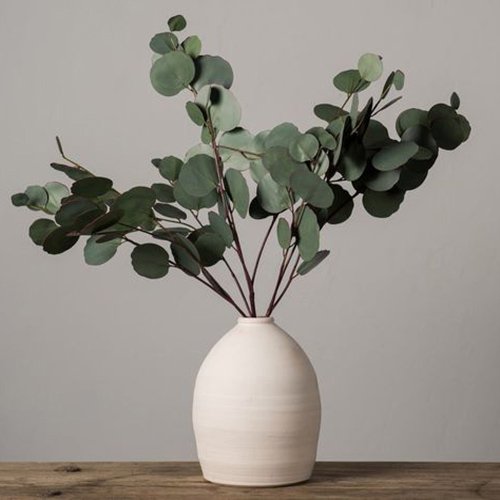
dried Eucalyptus leaves
read more : Drying natural flowers | Introducing 8 wonderful ways to dry flowers
Common Problems With Eucalyptus
Eucalyptus trees remain relatively healthy when in their preferred environment. However, in suboptimal conditions, they can come down with certain issues. Eucalyptus plant
Leaves Turning Brown
Leaves turning brown on a eucalyptus tree can be a sign of too little moisture. That’s likely the issue if you notice leaves curling up or dropping as well. In that case, up your watering to keep the soil lightly moist but not soggy. Brown leaves also can be a sign of disease, especially fungal diseases. If just a small area is affected, remove that portion promptly. Or treat with an appropriate fungicide.
FAQ …
Is eucalyptus easy to grow ?
Eucalyptus can be tricky to grow outside of its natural environment. But with enough sunlight and warmth, it can grow vigorously. Eucalyptus plant
How fast does eucalyptus grow ?
How long it takes to grow eucalyptus largely depends on how closely you can mimic its natural environment. In prime conditions, eucalyptus is a fast-growing tree and can gain several feet per year.
Can I plant eucalyptus outside ?
Eucalyptus can grow outdoors in USDA hardiness zones 8 to 11. You also can keep a container outside during the warmer months and bring it inside to overwinter once temperatures dip below 50 degrees Fahrenheit.
read more : Everything about red willow : How to Plant & care for them
Why should you not plant eucalyptus ?
Even though they’re not invasive, eucalyptus trees outside of their natural environment can compete with native plants for resources, throwing off the ecological balance. They also are toxic both to humans and pets.
Are Eucalyptus Plants Toxic ?
Eucalyptus essential oils and extracts are often found in both over-the-counter drugs and alternative medicines, but eucalyptus oil can be toxic when consumed, so keep it away from pets and children. It’s also recommended that pregnant and breastfeeding women avoid using direct applications of eucalyptus oil.
Eucalyptus plant
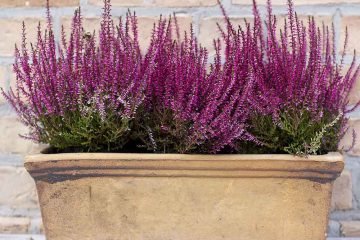
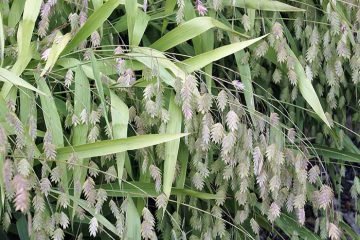
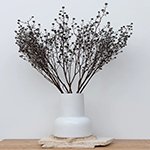
0 Comments